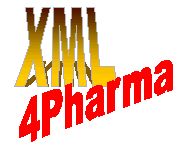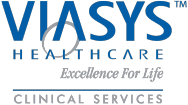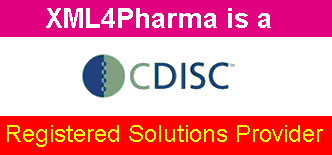

|
||||
| Home | Services | CDISC | Software | About us |

 How to comply to CDISC ODM and Lab standards (1 day)
How to comply to CDISC ODM and Lab standards (1 day)
We often get the question: "What should we do to comply to the CDISC set of standards ?"
Well, this course gives you the answers. It treats the ODM and Lab standards from the viewpoint of conformity.
It learns you about those parts from the standard that are not covered by the DTD or XML-Schema, about conformity levels,
and how conformity can be reached by setting up the correct procedures in your organization and in cooperation with your business partners.
Topics covered are:
Introduction to XML for working with the CDISC set of standars (1 day)
This basic XML course gives you a jump start in the use of XML for CDISC ODM and Lab.
We learn you everything you need to know about XML to be able to work with the CDISC set of standards: all the
working examples are from the CDISC ODM and Lab (later also from the Protocol and define.xml standard).
Dependent on the kind of company and YOUR requirements, the following topics are treated:
 The structure of the define.xml (CRT-DDS) file, for submitting metadata to the FDA
The structure of the define.xml (CRT-DDS) file, for submitting metadata to the FDACDISC-ODM and Lab Implementation (1 day)
This training is especially designed for Data Management companies, CROs, and Clinical Data departments
at pharma companies. It learns you about the opportunities brought by the use of XML in the CDISC standards, and
leans you how you can start implementing the CDISC set of standards without high costs.
Basic knowledge of XML is required.
Dependent on the kind of company and YOUR requirements, the following topics are treated:
 The new mechanims for Vendor Extensions in ODM (1.2.1)
The new mechanims for Vendor Extensions in ODM (1.2.1)These trainings are usually given on-site at your location, saving your coworkers traveling time and costs, and enabling us to customize the course to your special needs (if desired). Minimum group size is 5, maximum group size is 10.
In our experience, it is extremely advantageous to combine this course with 1-3 days of consultancy, after which your company will be really ready for using the CDISC ODM or Lab in production.
The cost for each of these courses is € 2500 (SFr. 3700 / US$ 3250) for a group of 5-10 people (ex.VAT if applicable).
| Course organisation | Conditions |
Note: The full or a shortened version (1/2 day) of these courses is occasionally given on behalf of CDISC. This also allows individuals to attend these courses
Web Services for Pharma Application Integration (1 day)
This course was given for the first time at InfoTechPharma 2004.
It gives a very good introduction to the world of SOAP, XML-RPC, application integration between inhomogeneous systems.
During the course, a simple web services system for the exchange of CDISC ODM files between different partners in the clinical data process is being developed.
This course can now also be given at YOUR location, and adapted for YOUR specific needs !
Conditions are identical to those of our CDISC-ODM implementation course
Introduction to XML for Pharma coworkers (1 day)
Every IT'er in a pharmaceutical company, Regulatory Affairs coworker, middle manager in Clinical and in R&D should at least have a minimum knowledge about XML and its derivatives.
Therefore we have prepared a unique introduction course, especially
tailored to people in the pharmaceutical industry. This one-day course learns
you the basis of XML, with pharmaceutical working examples such as the
Operational Data Model (ODM) of the Clinical Data Interchange Standards Consortium
(CDISC), FDA's and EMEA's Individual Case Safety Reports (ICSR), and of course, the
eCTD, the electronic version of the Common Technical
Document.
We can also easily tailor the course for people working in R&D, Bioinformatics, Regulatory ...
Furthermore, the course may contain (on request) a session about internationalization and the use of Unicode, which is especially important for preparation and submission of information in different languages (EMEA), and with different charactersets (Greek, Russian, Chinese, Japanese...). This is a session you will never find in other XML courses!
New is that, also on request, we include a chapter about electronic signatures in XML documents. This is now possible, as there is now a new standard published by the W3C consortium, for digital signatures in (and in the form of) XML documents.
This course is given on-site at your location, saving your coworkers
traveling time and costs, and enabling us to customize the course to your
special needs (if desired). Minimum group size is 5, maximum group size is
10.
Remark that this course is the more general version of our Introduction to XML for working with the CDISC set of standards training.
The cost for this course is € 2500 (SFr. 3700) for a group of 5-10 people (ex.VAT).
| Program | Course organisation | Conditions |
e-R&D in Pharma: from Java Server Pages to electronic submissions
This presentation gives an overview of the modern, web-based use of
information technology in Pharma R&D. Starting from the use of IT in
molecular discovery, the audiance is given an overview of possible policies
and techniques to accelerate the development of drugs, with the emphasis of
communication and efficient data exchange. The keyword nowadays is
integration. New technologies and data formats make it possible to
have all necessary information available and to integrate it within each
possible application.
The newest developments, such as world-wide standardized clinical data
formats, are explained, and how these can be integrated in a company's
information processes.
The presentation includes numerous interesting tips how to improve drug
development through modern IT.
Part of the presentation is dealing with electronic submissions. A rapid
development is going on in this area, for which many pharmaceutical companies
are not well prepared. Our lecture shows how information for electronic
submissions can better and faster be obtained and assembled, translated to
other languages (EMEA), and re-used in other applications (e.g. information
for patients).
A special issue is validation. It is shown how modern IT-design policies
("Design by contract"), can lead to more robust software.
This presentation is given at pharmaceutical companies, and other interested groups, at no cost except for compensation of travel and lodging costs. The presentation is not at all a sales lecture, but an introduction on our view how modern IT can lead to more cost-efficient and shorter time-to-market development of drugs.
From Chemical Markup Language to Common Technical Document - Is your company ready for XML-technology ?
"It is now more dangerous not to invest in XML than it is to invest" according to Gartner analyst Jess Thompson at the recent Gartner Symposium / ITXPO in Brisbane.
New XML standards are proliferating at a high rate, also in the pharmaceutical world. Not surprisingly, as the use fo XML-technology can speed up the development and registration of new drugs considerably.
At the start of development, GEML (Gene Expression Markup Language) enable exchange of information between applications much more rapidly than ever before. Even CML (Chemical Markup Language), often regarded as an academic excercise, can have its value, if other information has to be attached to the molecular information or vice versa.
At the other end of the development cycle, at registration time, the Common Technical Document (CTD), mandatory as of 2003, is one of the most important submissions. The eCTD, which is in XML format, is another example why pharmaceutical companies should embrace XML-technology. Other examples where XML can save considerable time in development, are the CDISC-ODM (e-clinical), ICSR (FDA,EMEA) and PIM (EMEA).
The seminar gives an introduction about what XML is, how it is used to speed up pharmaceutical R&D, and where and how it should not be used. It describes a number of possible strategies how to introduce and implement XML-technology in Pharma R&D
Finally, an overview of emerging XML-technologies, which are especially useful for Pharma R&D (such as XML-e-signatures) is given.
 |
 |
 |
 |
 |
 |
||||
 |
 |
 |
 |
 |
 |
 |
|
 |
 |
||
 |
 |
 |
|
 |
 |
 |
|
 |
 |
 |
 |
 |

